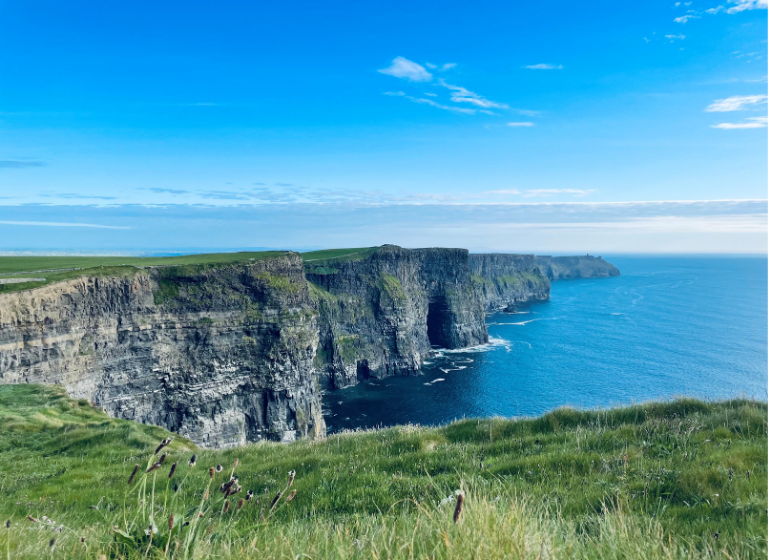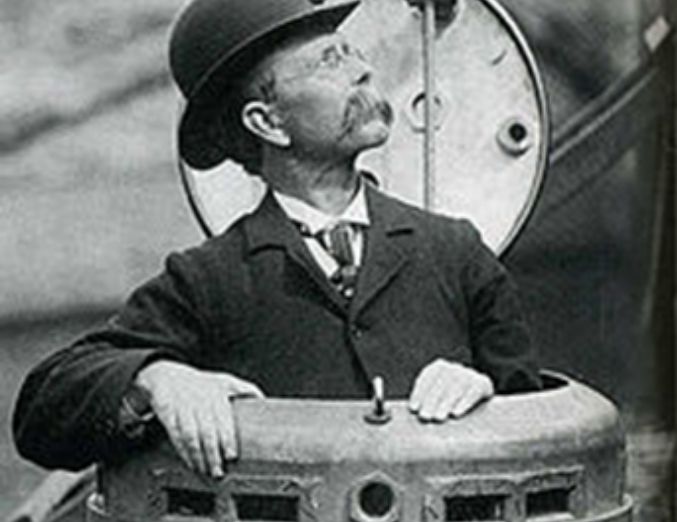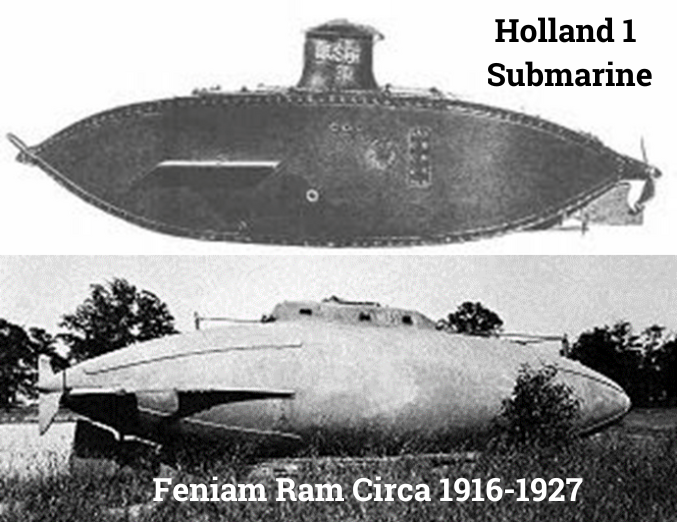

JP Holland

JP Holland Background
John Philip Holland was born just off the Atlantic Coast in Liscannor Co. Clare on the 24th of February 1841, to a coastguard father and a gaelic speaking mother. His upbringing in West Clare was marked by lands steeped in mythology. JP Holland died on August 14th 1914. He is buried in Totowa, New Jersey, less than 1 mile from where he launched his first submarine.
While living on the coast of Ireland, John spent many hours both observing birds in flight and trying to solve the problems of aviation mathematically. Through his observations and calculations, he gained an understanding of the principles of aerodynamics that was far ahead of his time.

JP Holland Submarines
Holland developed the 1st submarine to be formally commissioned by the US Navy, and the 1st Royal Navy submarine, Holland 1.
His first submarine, the Holland No.1, was planned in St. John’s School and it was built in Todd & Rafferty’s shop, Paterson, NJ in 1877. It was 14 feet long and was powered by a primitive 4hp engine and carried one man. It was brought down to the Passaic River and launched before a big audience, but someone had forgotten to insert the two screw plugs and the sub began to sink. The following day, however, Holland made several successful dives. The Fenians were impressed and voted more money to develop a boat ‘suitable for war.’
The idea was to construct a submarine to hold 3 men. With extra funds from the Fenians, Holland was able to give up his teaching job and concentrate on his experiment. The Fenian Ram, built at Delamater iron works, New York, was launched in May 1881. It was 31 feet long, driven by a 15 horsepower engine, could travel at 9mph over water and 7mph under water, displaced 19 tons and was armed with an underwater canon fired by compressed air.

